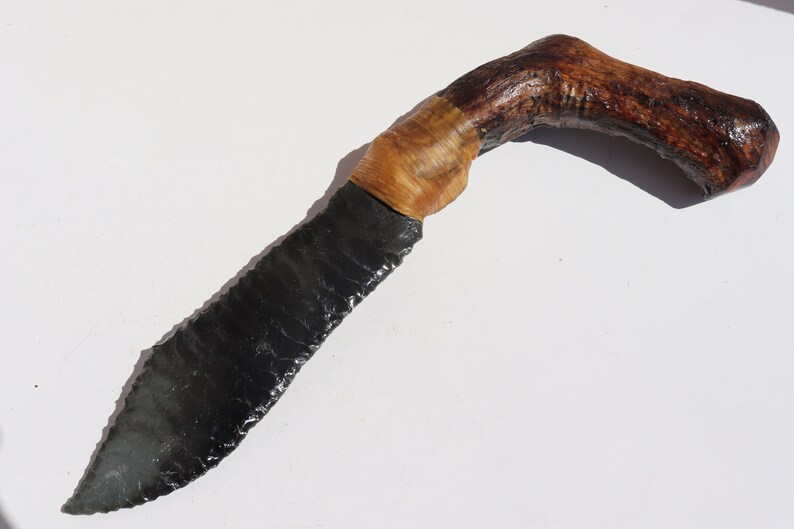
(1976) stated that an obsidian source area includes several outcroppings of obsidian, limited in spatial extent, which may or may not have common chemical features and may or may not have been used by ancient humans. Before discussing these obsidian sources, a definition of what an obsidian source is must be established, as many of the terms used allow for different and competing interpretations. These resources, however, are still quite abundant in the archaeological record and their origins can be traced by their physical and geological properties. Obsidian sources in Mesoamerica are limited in number and distribution, and are restricted to the volcanic regions of the Sierra Madre Mountains as they run through Mexico and Guatemala. Map showing the locations of some of the main obsidian sources in Mesoamerica Other curation techniques of prismatic blades involve reshaping them into other tool types, such as projectile points and awls. In other words, as the edge of a blade lost its sharpness after long-term use, the blade may have been used in scraping activities, which does not require a very sharp edge, than as a cutting implement. While prismatic blades were generally not curated (in the traditional sense) due to their small size, utility of the tools may have been maintained by changing their function. As a result, tool curation through edge-rejuvenation and/or re sharpening was commonly used on larger-mass tools, such as bifaces, to prolong the tool's (and the raw material's) utility.

It is in this manner: First they get out a knife stone (obsidian core) which is black like jet and 20 cm or slightly less in length, and they make it cylindrical and as thick as the calf of the leg, and they place the stone between the feet, and with a stick apply force to the edges of the stone, and at every push they give a little knife springs off with its edges like those of a razor." Īs the distribution of obsidian sources in Mesoamerica is generally limited, many areas and sites lacked a local obsidian source or direct access to one. Motolinia, a 16th-century Spanish observer, left this account of prismatic blade production: Modern attempts to redesign production techniques are heavily based on Spanish records and accounts of witnessed obsidian knapping. Prismatic blade production, a technique employing a pressure flaking-like technique that removed blades from a polyhedral core, was ubiquitous throughout Mesoamerica.


The use of pecking, grinding, and carving techniques may also be employed to produce figurines, jewelry, eccentrics, or other types of objects. It is obtained by either quarrying source sites or in nodule form from riverbeds or fractured outcrops.įollowing the removal of cortex (when applicable), bifacial, unifacial, and expedient flake stone tools could be produced through lithic reduction. This contributed to its prolific use throughout Mesoamerica. An obsidian prismatic blade fragment from the Maya site of Chunchucmilĭue to its glassy internal structure, obsidian is relatively easy to work, as it breaks in very predictable and controlled ways via conchoidal fracturing.


 0 kommentar(er)
0 kommentar(er)
